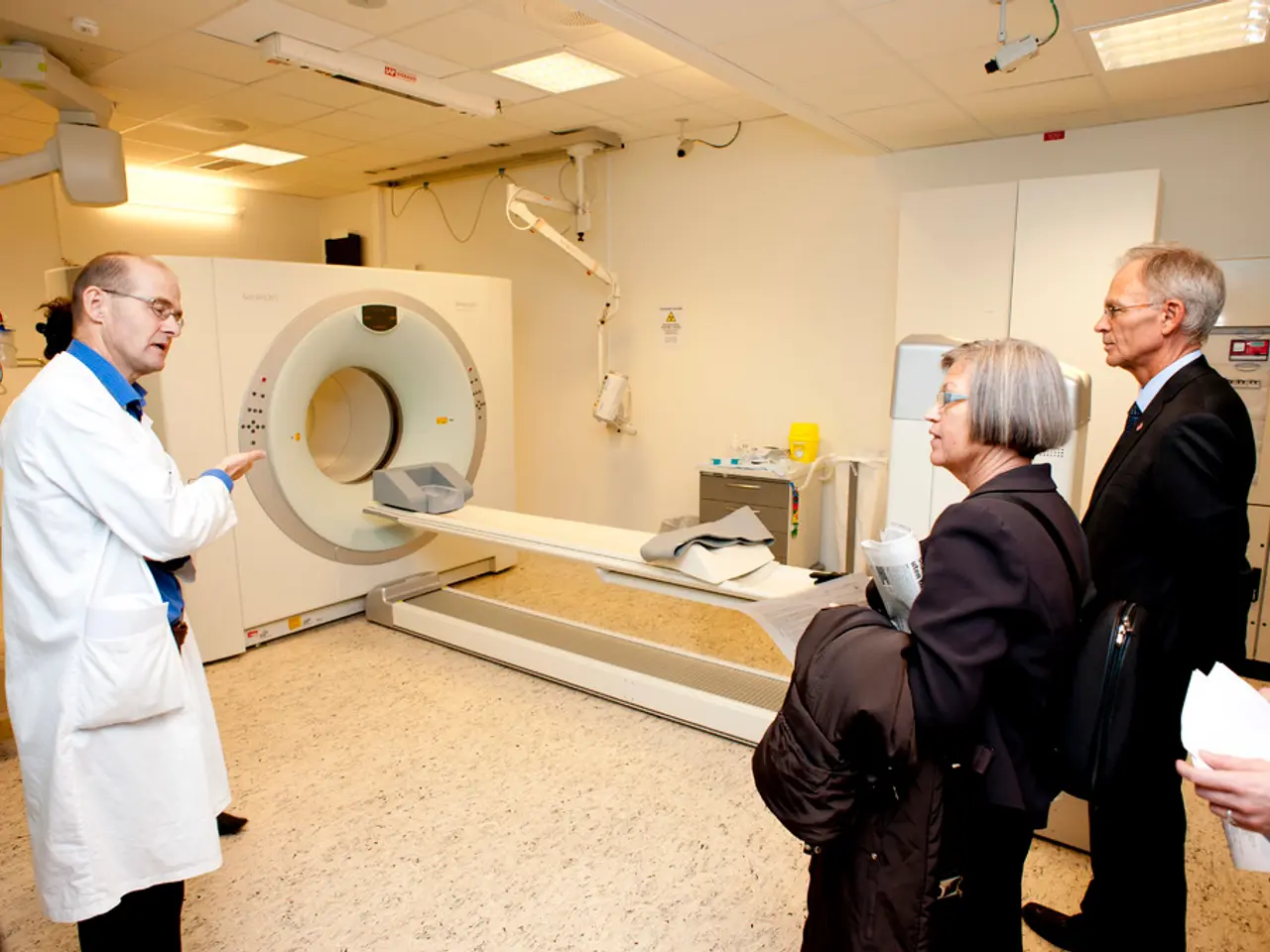Skin Rashes Caused by Herpes: Recognizing Symptoms, Making a Diagnosis, and Providing Treatment
In a world where various skin conditions can cause concern, understanding herpes rashes is crucial. These rashes, caused by different strains of the herpes virus, share some common characteristics while displaying distinct differences based on the body part affected.
Herpes rashes typically begin with a sensation of burning, tingling, or itching before the rash appears. The rash itself consists of small, fluid-filled blisters that can break open, causing shallow painful ulcers, and then crust over as they heal.
When it comes to oral herpes, or HSV-1, small, painful blisters develop around the lips and mouth area. These cold sores or fever blisters are often preceded by a tingling or itching sensation. They usually heal within a couple of weeks.
Herpes Zoster Ophthalmicus, a form of shingles that affects the eye area, starts with a tingling, burning pain around the eye, forehead, temple, and nose. A vesicular rash with small, blister-like sacs appears on the skin, typically on one side of the face. This rash can be accompanied by swelling, painful watering eye, blurred vision, and in some cases, more severe ocular complications.
Genital herpes, caused by HSV-2 or HSV-1, presents with small, painful blisters on or around the genitals, anus, or nearby skin. This condition can cause pain while urinating if sores are near the urethra and may be accompanied by flu-like symptoms such as fever, body aches, and swollen lymph nodes.
It's essential to note that shingles, caused by the varicella-zoster virus, the same virus that causes chickenpox, causes a rash of blisters on the skin, usually appearing on one side of the trunk, near the waistline. Shingles symptoms include fluid-filled blisters, tingling, numbness, or itching of the skin, burning, shooting pain, fever, chills, headache, and upset stomach.
Other conditions, such as contact dermatitis, can cause rashes similar to herpes. It's crucial to consult a healthcare professional if a new and unexplained rash appears.
For those with long-term health conditions or weakened immune systems, prompt diagnosis and antiviral treatment are important to prevent complications. People with cancer, HIV, or AIDS and anyone who has recently had an organ transplant should seek urgent medical attention if they think they may have herpes.
In conclusion, while herpes rashes can be alarming, understanding their visual characteristics and additional symptoms can help in early diagnosis and effective treatment. It's always best to consult a healthcare professional for accurate diagnosis and guidance.
- Recognizing the characteristics of shingles rash is vital, as it typically presents as fluid-filled blisters on one side of the trunk, near the waistline.
- Common to various herpes rashes is the initial sensation of burning, tingling, or itching before the rash appears.
- Aq: It's essential to seek prompt diagnosis and antiviral treatment, particularly for individuals with long-term health conditions or weakened immune systems, to prevent complications.
- Among the skin conditions that can mimic herpes rashes is contact dermatitis, underscoring the need for professional consultation if a new and unexplained rash appears.
- Skin-conditions like herpes Zoster Ophthalmicus, a form of shingles that affects the eye area, can cause swelling, painful watering eye, blurred vision, and in some cases, more severe ocular complications.6.genital herpes, caused by HSV-2 or HSV-1, presents with small, painful blisters on or around the genitals, anus, or nearby skin, and may be accompanied by flu-like symptoms such as fever, body aches, and swollen lymph nodes.
- In the context of health-and-wellness, sexually-transmitted diseases like genital herpes can also affect sexual-health, causing pain while urinating if sores are near the urethra.
- Hepatitis, a viral infection that affects the liver, may not present with rashes, but other symptoms such as fatigue, nausea, and jaundice (yellowing of the skin and eyes) should prompt a medical evaluation.
- Diabetes, a chronic condition affecting blood sugar levels, can lead to various skin-conditions such as rashes, slow-healing sores, and infections, emphasizing the importance of skincare and regular check-ups.
- Predictive science and medical advancements have made it possible to manage various medical-conditions effectively, including herpes, promoting a holistic approach to health and wellness.




